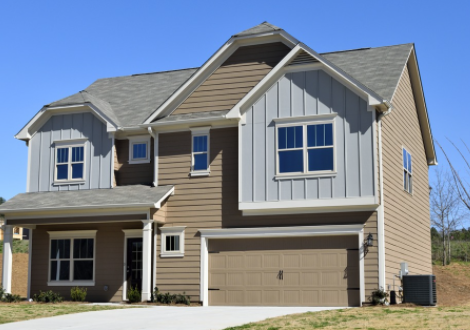Buying a second home has become more popular in recent years. For some people, it’s the perfect way to take advantage of low-interest rates and grow their wealth by investing. But for others, buying a second home can be risky because they may not have enough equity in their primary residence.
In order to purchase a property as an investment or vacation property, you must be able to show that your debt-to-income ratio will allow you to afford both mortgages without being overextended. If you don’t make sure this is the case before you start looking at properties, it could end up costing you thousands of dollars in extra mortgage payments every month.
Let’s take a look at what it takes to get a mortgage for a second home.
1. Determine if you have enough equity in your primary residence before buying a second property
Before you start looking at the properties, it’s important to evaluate your first home’s value and determine how much equity you have in it. You’ll want to know the following:
- The value of your primary residence
- The amount you owe on it
- How much interest rate is left on the mortgage if you have a variable-rate loan, or how much time is left until the mortgage matures if you have a fixed-rate loan.
2. Get pre-approved on a mortgage
After you know the equity in your primary residence and how much you can afford to spend on a second home, it’s time to apply for financing. It’s also important that you get pre-approved so you won’t waste time looking at properties that are out of your price range. Once you get pre-approved, you’ll have peace of mind that you’ll be able to secure a mortgage on a second home or investment property. You can click here if you want to know more about mortgage refinance.
The most important part of this step is to find the right lender. A lot of borrowers end up paying much higher interest rates than they would have if they had gone with another lender, because some lenders have strict borrowing requirements while others are more lenient.
3. Do some research to find out how much you can afford to spend on your new home purchase
Once you have an idea of how much you can afford, it’s time to do some research and get a sense of the cost of properties in the area you are considering buying.
Now that you know the following items, you’ll be able to get an idea of what you can afford:
- Your maximum mortgage amount
- The estimated interest rate for your second home or vacation property loan
- The projected value of your property after the transaction goes through
- The estimated closing costs
4. If you need more equity in your primary home, consider selling it or refinancing with another lender first before buying the second one
If you don’t have enough equity to make a down payment as large as you’d like on your new home purchase, consider selling your current residence first, then buying the new one. This way, you’ll be able to use the money from the sale of your primary home and put it towards an even larger down payment on your vacation property or investment property.
If you don’t feel comfortable selling, consider reverse mortgage refinancing with another lender who will lend you more than what you currently have. Just make sure you aren’t extending the length of your loan, which will result in higher monthly payments.
If you don’t feel comfortable selling, consider your home refinancing with another lender who will lend you more than what you currently have. Just make sure you aren’t extending the length of your loan, which will result in higher monthly payments.
5. If you are able to do both simultaneously, go ahead and start looking for properties that meet all of your needs
For this step, you may want to consult an expert realtor who specializes in vacation homes or investment properties for the best advice.
Go ahead and take out that equity from your primary home, get approved for a mortgage, and start looking at the properties that meet all of your needs. It’s important to note that you may have to pay PMI (private mortgage insurance) if the loan-to-value ratio is higher than 80 percent.
When it comes to purchasing a second home, you’ll want to be very meticulous about how much equity is in your primary residence and what amount of mortgage can afford. You may also have the option of selling your property first before buying another one or refinancing with a lender who will allow more borrowing on the loan. The most important thing when looking for properties is finding out how much they cost and if there are any other hidden fees that come with owning them (i.e., PMI). In conclusion, getting pre-approved at a bank or lending institution should help make this process go smoothly from start to finish!
 HammBurg Be informed with latest news, reviews, entertainment, lifestyle tips, and much more.
HammBurg Be informed with latest news, reviews, entertainment, lifestyle tips, and much more.




